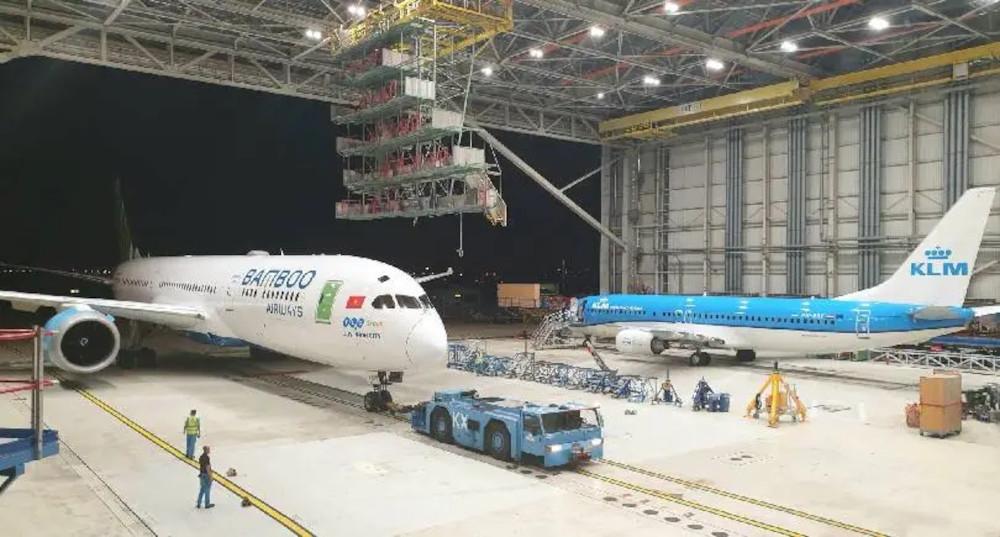
Maintenance was Air France-KLM Group’s most profitable segment in 2021, and its AFI KLM E&M subsidiary is looking forward to exploiting its capabilities on new-generation equipment in the coming years.
Via its Prognos platform, the MRO provider also expects to benefit from increasing digitalization of engineering services as airlines seek to optimise their ground time and operations.
Maintenance EBITDA for the calendar year was €374 million, versus €262 million from the group’s network airlines and €68 million from its Transavia low-cost subsidiary.
However, third-party maintenance revenues declined by almost a quarter in the year to €1 billion, representing 36% of total maintenance sales.
The company noted that airlines are tending to defer maintenance and are grounding or phasing out older generation aircraft, which has caused “weaker and more volatile demand”.
Another limiting factor was airline’s increasing use of green time management, in particular on engines and APUs.
However, it also noted the positive long-term trend of airlines increasing the proportion of next-generation aircraft, which should benefit AFI KLM E&M from around 2024, when spending on support for newer equipment will pick up.
AFI KLM E&M has positioned itself to assist CFM LEAP operators during the entry into service phase, carrying out on-wing and on-site work on LEAP-1A and LEAP-1B engines.
Air France Industries, meanwhile, will perform MRO work on Pratt & Whitney PW1500G geared turbofan and Rolls Royce Trent-XWB 84k engines. This work will be offloaded from the engine OEMs and other customers that have contracted maintenance services with the OEM. Here the commercial relationship will be predominantly with the OEM and not with the operator of these engines.
Furthermore, AFI KLM E&M will compete for engine parts advanced repair work within the OEM’s networks.





